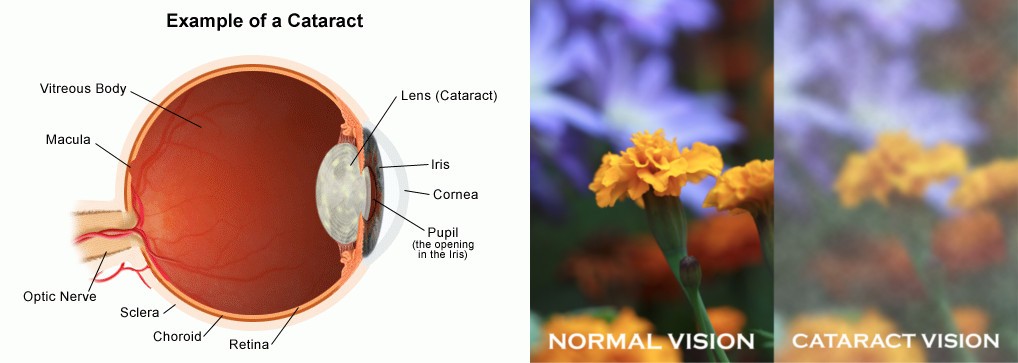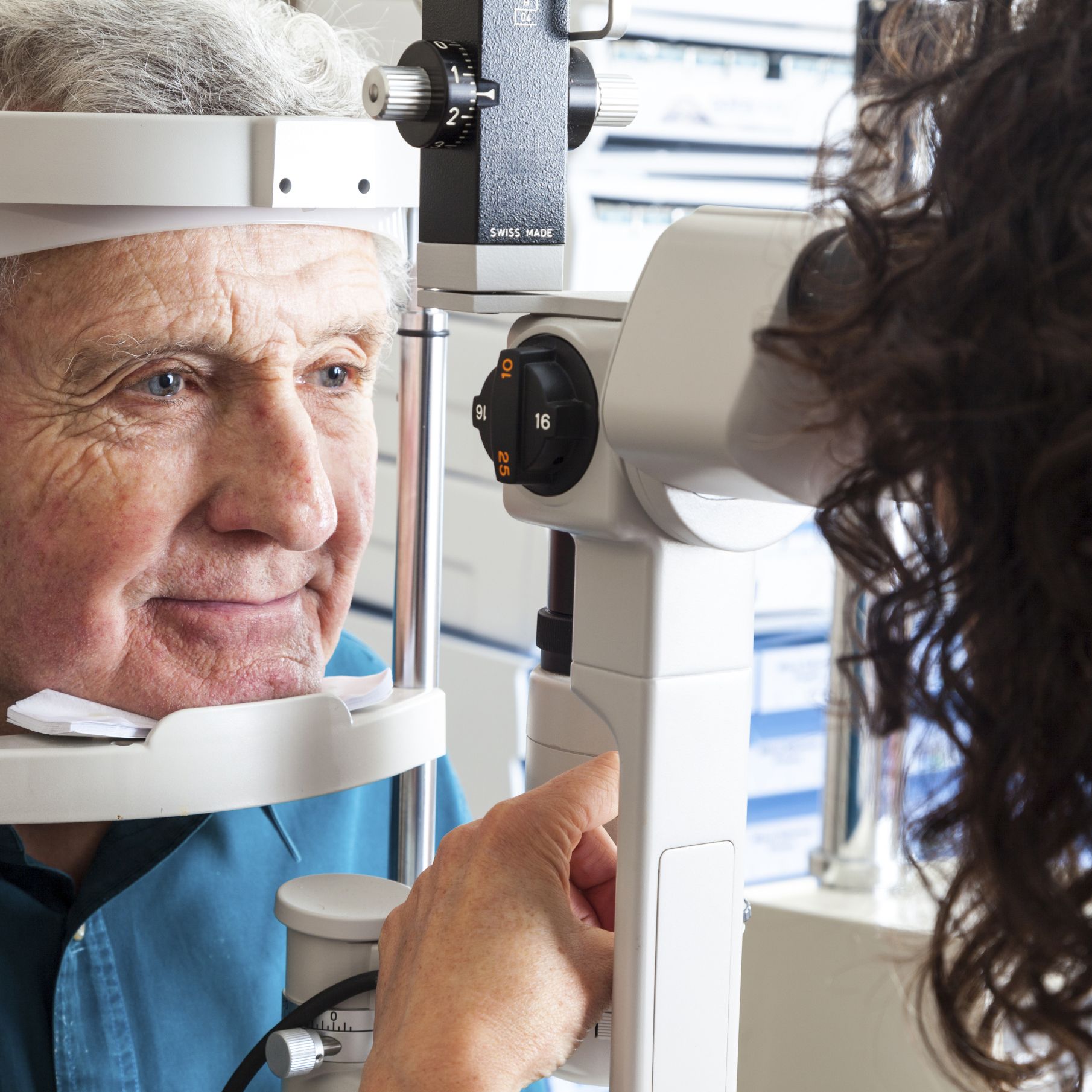What is a cataract? This is a question I answer almost every day, but this may be my first time to answer this question in written form.
We are all born with a clear lens in each eye. This lens is part of the focusing mechanism of the eye. The eye gets about 1/3 of its power from the lens and about 2/3 of its power from the cornea. When we are in our youth, the natural lens has the ability to change shape and increase its power. This extra power from the lens is what lets us see up close without reading glasses.
Throughout our life our natural lens undergoes changes just like the rest of our body. When people ask me what causes those changes in the lens, I often reply playfully that the changes are from exposure to the smoke of birthday candles. In truth it is mostly due to oxidative stress from within our body, but that just isn’t as fun to say.
One of the first noticeable changes that happens to the lens usually occurs in our mid forties. During this time the lens gradually losses it ability to change shape. This means the lens can not add enough extra power for people to see up close. This is know as presbyopia, please remember that word for your next family trivia night. People often try to overcome this loss of power by holding things out away from themselves. This may work for a while, but usually they end up needing reading glasses or a bifocal. This occurs when patients have found that their “arms aren’t long enough to read clearly.” The good news is that, even though the lens has lost its ability to help you see up close, it has not lost its ability to transmit light effectively. During this phase you can still see clearly with glasses or contacts.
As we continue to blow out birthday candles, other changes happen to our lens. These changes usually develop slowly over years to decades, but they can occasionally develop quickly over weeks to months. During this phase the lens becomes hazy. You may think of this like glasses that have fogged up and blurred your vision. The lens also becomes darker and doesn’t let enough light through. You can think of this like wearing sunglasses inside. These changes can make it difficult to see normal daily tasks such reading fine print or seeing street signs. The lens can also accumulate changes that scatter light within the eye. This can cause glare from oncoming traffic that makes it difficult to drive at night. Once the lens has accumulated enough changes to effect your activities of daily living it gets a new name. At this point we start calling it a cataract.
To summarize a cataract is not a new growth on or in your eye. Instead, it is a clouding of your once clear lens. These lens changes happen to everyone eventually, so please don’t feel alarmed if your eye doctor tells you that you have cataracts. Another reason not to worry is that cataract surgery has advanced by leaps and bounds over the last several decades. Modern surgery is safe and effective. Further, technological advances have given us options for people who want to decrease their dependence on glasses.
If you are having trouble with your vision you can make an appointment with one of our Optometrists or Ophthalmologists to find out why.












